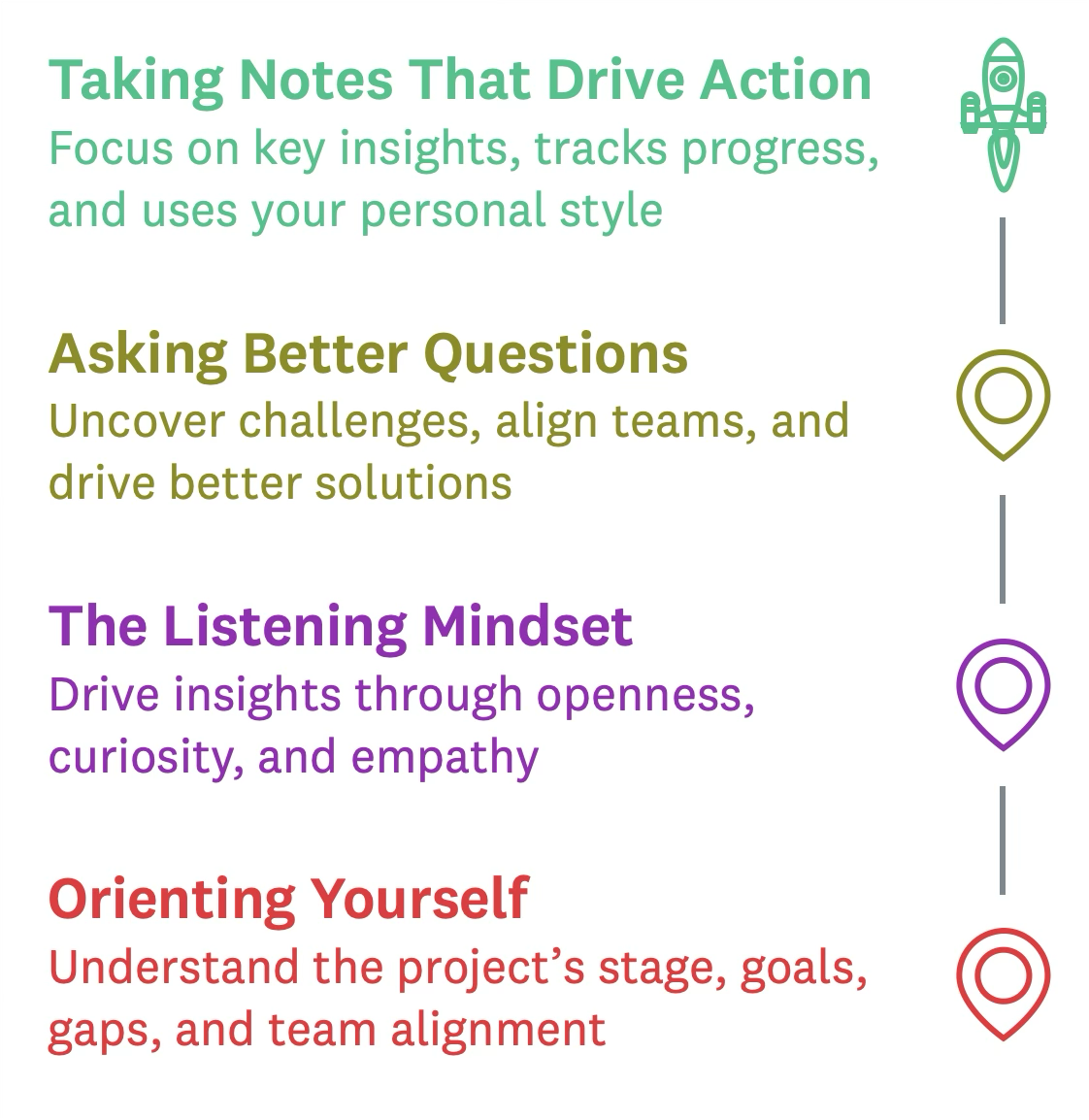Coping with Complexity in Design
Tips to Make Sense of the Chaos
Design is not a linear process—it is an ongoing cycle of exploration, iteration, and refinement. To build truly impactful products, teams must always be assessing—not just the final product, but the relationships that drive collaboration and the processes that shape the work.
Design is inherently complex. Whether you’re navigating stakeholder expectations, aligning teams, or managing the unpredictability of user needs, the ability to cope with complexity is a critical skill for designers. But how do we make sense of it all?
This article will explore techniques to orient yourself, listen effectively, ask better questions, and take structured notes—all essential tools for managing complexity in design work.
Orienting Yourself
Before tackling a complex design challenge, it’s essential to get your bearings. This means knowing:
Where the project is in its lifecycle
What the objectives and milestones are
What information is still missing
Whether the team is aligned on next steps
A key takeaway from this section is that progression isn’t just about time—it’s about clarity. Before moving forward, teams should ask:
Do we understand what needs to happen next?
Are we solving the right problem?
What assumptions need to be tested before we proceed?
By checking orientation regularly, teams can avoid wasted effort and course-correct before problems become too costly.
The Listening Mindset
Listening is more than hearing words—it’s about understanding perspectives, uncovering insights, and allowing for unexpected discoveries. Three key aspects of adopting a listening mindset:
Be an Open Vessel – Set aside preconceptions and be receptive to new information.
Be Genuinely Curious – Approach conversations as an investigator, asking deep and meaningful questions.
Be Empathetic – Consider the emotions, behaviors, and attitudes behind what’s being said.
By mastering active listening, designers can extract valuable insights that might otherwise go unnoticed.
Asking Better Questions
Designers must constantly ask the right questions to uncover hidden challenges, align teams, and drive better solutions. The PDF introduces a question-asking framework that includes:
Clarifying – Help refine understanding (“Can you tell me more about X?”).
Funneling – Dig deeper into assumptions (“What evidence supports this decision?”).
Adjoining – Explore broader context (“How does X relate to Y?”).
Elevating – Zoom out to see the big picture (“Are we asking the right question?”).
The key to managing complexity is not knowing all the answers—it’s knowing what questions to ask.
Taking Notes That Drive Action
Note-taking is often an afterthought, but effective note-taking can make or break a project. Three essential tips:
Don’t Try to Capture Everything – You’re not a stenographer; focus on key insights.
Listen with Progress in Mind – Capture what helps or hinders progress, such as open questions, unresolved issues, or decisions made.
Develop Your Own Note-Taking Style – Use a mix of sketches, keywords, and shorthand to organize thoughts efficiently.
The goal of note-taking isn’t just documentation—it’s about distilling insights and making sense of complexity.
Complexity Can Be Managed, Not Eliminated
Complexity in design is unavoidable. But by orienting yourself, listening actively, asking better questions, and structuring your notes, you can transform complexity into clarity and action.
By embedding these practices into your workflow, you’ll navigate uncertainty with confidence and build better, more thoughtful designs.
What tips from this article resonate with you the most? Let’s connect and discuss!
